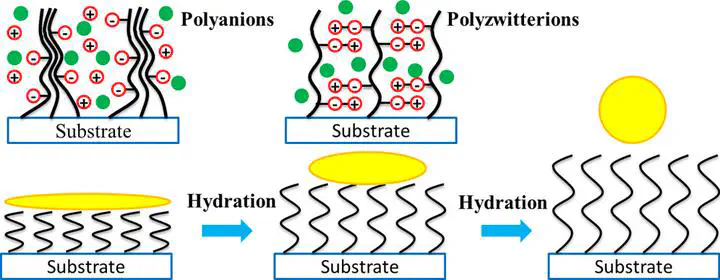Effect of the Self-Assembled Structures of Hydrated Polyzwitterionic and Polyanionic Brushes on Their Self-Cleaning Capabilities

摘要
The capability of polyelectrolyte brushes to spontaneously clean oil fouling via water is determined by factors including water wettability and the self-assembled structures of hydrated polyelectrolytes. Although the charged groups of polyelectrolytes provide the original source of water wettability, the self-assembled structures play a significant role in the self-cleaning performances. Here, we employ coarse-grained molecular dynamics simulations to study the general self-cleaning characteristics of two types of surface-grafted polyelectrolyte brushes (i.e., zwitterionic and anionic polyelectrolytes). It has been found that the high grafting density is favorable to fouling reduction for both polyzwitterions and polyanions. To be specific, the hydrated polyzwitterions form an intermolecular cross-linked network via zwitterionic complexes, resulting in better self-cleaning capabilities than the polyanions at lower grafting densities. However, polyanions form bundles with each consisting of several chains via hydrophobic interactions and electrostatic repulsions presenting better self-cleaning performances than the polyzwitterions at higher grafting densities.